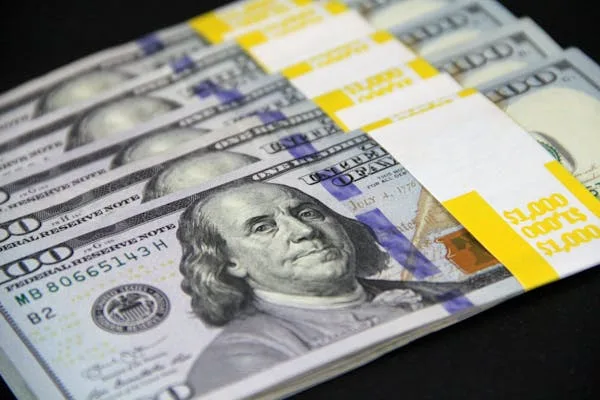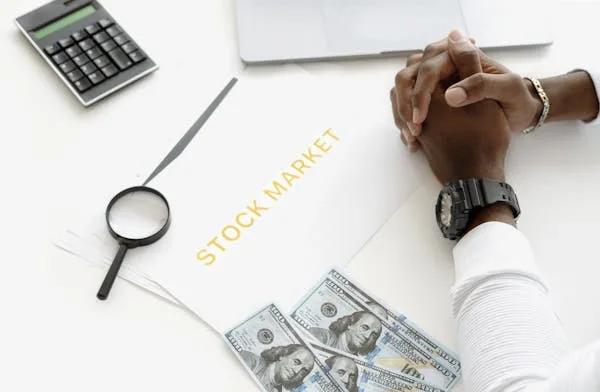Getting your first round of funding can feel like trying to solve a puzzle with missing pieces. There’s a lot of information out there, but what really matters is understanding what other founders like you are getting, what investors expect, and how to avoid giving away too much too early. This guide gives you the real numbers and breaks down what they mean, so you can make better decisions, negotiate smarter, and grow faster.
1. Average pre-seed valuation in the U.S. (2024): $7 million
So, what does it mean if the average pre-seed valuation is $7 million? It means that early-stage startups in the U.S., even before they have significant traction, are being valued quite optimistically. This doesn’t mean everyone gets this number—but it does provide a useful starting point.
If you’re a founder preparing to raise your first round, this figure can give you a baseline. It’s not about inflating your valuation for the sake of it, but understanding where you stand in the current market.
What affects your valuation?
Several things can influence how much your startup is worth at this early stage:
- Your team: If your founding team has experience, especially in startups, your valuation tends to go up.
- Your market: Big markets suggest big potential. Investors pay attention to this.
- Your product: Even a prototype can boost valuation if it’s promising and solves a clear pain point.
- Early traction: Even a handful of users or small revenue can give you a stronger negotiating position.
How to justify your valuation
Let’s say you want to raise $1 million and you’re aiming for a $7 million valuation. That means you’re offering around 14% equity. That’s acceptable in many cases. But to justify that $7 million, you’ll need to show potential.
You don’t need to be generating revenue yet. But you should have:
- A clear product roadmap
- A realistic go-to-market strategy
- Insights into your customer base
- Some form of validation—this could be user interviews, pre-signups, letters of intent, etc.
Don’t chase the average blindly
The $7 million average isn’t a rule. It’s a data point. You should only aim for it if you can back it up. Overvaluing your company early on might feel good in the moment, but it can cause trouble in future rounds if you can’t meet growth expectations.
Instead, use this stat as a conversation starter with investors, and always be ready to explain how you came up with your number.
2. Median pre-seed valuation: $5 million
While the average is $7 million, the median is $5 million. Why the difference? A few startups raise at very high valuations, pulling the average up. But the median tells us what most companies actually get—and that’s often a better guide.
Why this number matters more than you think
When you’re negotiating, it’s useful to anchor your expectations here. If you’re a first-time founder, raising on an idea or early prototype, $5 million might be the most realistic target.
Don’t just pick a number because you saw it in a report. Investors will ask questions. They’ll compare you to other companies they’ve seen. They’ll want to know how you stack up.
How to position your valuation
If you’re aiming for $5 million, here’s how you can build a strong story:
- Highlight the problem you’re solving and why it matters now.
- Show early customer interest—even if it’s not revenue.
- Talk about your team’s relevant background.
- Be specific about your use of funds. If you’re asking for $500K or $1 million, explain exactly what milestones that money will help you reach.
Planning ahead
The pre-seed valuation you agree to now affects every future round. A clean, fair valuation at $5 million now makes it easier to raise your next round without down-rounds or excessive dilution.
3. Average equity given up in pre-seed round: 10–20%
Giving up 10 to 20% equity in your first round is completely normal. That’s the general expectation among pre-seed investors. It’s also a healthy range for both sides—you get the capital you need, and investors feel they have enough skin in the game.
How to protect yourself from giving up too much
There’s a balance here. You want enough money to build and grow, but you don’t want to be left with too little ownership early on. Start by figuring out how much you actually need, not how much you want. Then work backward.
Let’s say you need $500K. If you’re raising at a $5 million valuation, that’s exactly 10% equity.
Now, if you’re being asked to give 20% for the same $500K, that’s a $2.5 million valuation. Are you okay with that? Is it worth the trade-off?
Understand investor psychology
Investors want a meaningful stake. If their stake is too small, they may not stay involved. But they also know that taking too much early on can damage your motivation and harm future rounds.
Be prepared to negotiate, and use data points like these in your conversations. Most importantly, don’t get emotional about the number. Treat it like a business decision.
4. Median equity stake sold at pre-seed: 15%
If we zoom in on the data, we find that 15% is the most common equity amount given up. This is right in the middle of that 10–20% range. It’s a sweet spot that most founders and investors feel good about.
How much is too much?
Anything above 25% in the first round is usually seen as too much. If you give away 30% at pre-seed, you’ll struggle to raise your seed without hitting dilution limits. Many investors won’t touch a cap table that’s already bloated.
Cap table planning
You want to leave room for:
- Future investors
- Employee stock options
- Advisors
A clean cap table looks like this after pre-seed:
- Founders: 80–85%
- Investors: 10–15%
- Option pool: 5–10%
Stick to that range, and you’ll stay attractive to future investors.
5. Typical pre-seed funding amount: $500,000 – $1.5 million
Most pre-seed rounds fall in this range. That’s a wide window, but it makes sense—some startups are raising just enough to get to MVP, while others need more for market testing or early hires.
Don’t raise more than you need
It can be tempting to raise $2 million if you can get it. But unless you really need that much capital, it might not be the best move. Every dollar you raise comes at a cost—usually in equity.
Figure out your real runway needs:
- Product development
- First hires
- Go-to-market testing
Map those out and calculate how many months of runway you’re targeting. Then raise enough to get 12–18 months of breathing room.
6. Median amount raised in pre-seed: $750,000
While some pre-seed rounds go up to $1.5 million, the typical amount most startups raise sits closer to $750,000. That’s the number right in the middle of the range.
Why this number makes sense
$750,000 is usually enough to:
- Build and launch a minimum viable product (MVP)
- Hire 1–3 key team members
- Start acquiring your first users
- Run small marketing experiments
- Pay for basic operating costs for 12–18 months
At this stage, you’re proving your concept, not scaling it. You don’t need a full team or a massive marketing budget. That comes later.
Investors like this number too
For angels and small funds, $750,000 is an amount that fits into their portfolio strategy. It allows them to spread risk across multiple startups while still getting meaningful ownership (10–15%).
If you’re raising this amount, be ready to show how it takes you from your current state to your next milestone. Investors will ask what this money unlocks. Is it product development? User acquisition? Revenue?
The more clearly you can tie the capital to tangible results, the better.
7. Founders typically retain 80–90% of equity post pre-seed
This stat highlights what’s most important at this stage—ownership. Founders should still control most of the company after raising pre-seed. If you’re left with less than 80%, it’s a red flag.
Why this matters long term
Startups go through multiple funding rounds. If you start with too little ownership, each round will take a bigger toll. By the time you get to Series A or B, you might be left with a tiny slice of your own company.
That’s not just bad for you. It’s bad for everyone. Investors want motivated founders. If your stake is too small, your motivation can slip. Future investors will worry about this.
How to stay within the 80–90% range
The math is simple: if you’re raising at a $5 million valuation and bringing in $750,000, you’re giving up 15%. That’s perfect. Add in 5–10% for an employee option pool, and you’re still in a healthy place.
Stay disciplined. Don’t give out equity casually to early advisors or contractors. Every percent counts.
8. Pre-seed to seed round time frame: 12–18 months
This is your runway. Once you raise your pre-seed, you usually have 12 to 18 months before you need to raise again. That clock starts the day the money hits your account.
How to make this time count
First, set clear goals. What do you need to achieve before seed? Common milestones include:
- Building an MVP or beta
- Getting your first 1,000 users
- Generating early revenue
- Finding product-market fit
Not every startup hits all these. But you need enough progress to justify a higher valuation and a bigger check in the next round.

Don’t wait too long
If you wait 18 months before raising again, you may find yourself low on cash during fundraising. That’s risky. Fundraising often takes 3–6 months, sometimes longer. You don’t want to run out of money mid-process.
Start preparing for your seed round after 9–12 months. Build relationships with investors before you need them. Keep them updated. When the time comes, your raise will be much smoother.
9. Average number of investors in pre-seed round: 3–7
Pre-seed rounds are often syndicated. You won’t just have one big check. You’ll likely bring in several small investors. This spreads the risk and brings more people into your corner.
Why this works in your favor
More investors means:
- More connections
- More advice
- More future fundraising help
However, it also means more people on your cap table. That can get messy if not managed well.
Keep your cap table clean
Here’s how:
- Set a minimum check size (e.g., $25K or $50K)
- Use a lead investor to set terms
- Use a SAFE or convertible note to avoid early pricing debates
- Consider rolling funds or syndicates to group smaller checks
Use tools like Carta or Pulley to manage equity properly. Don’t DIY this part. Messy cap tables scare off future investors.
10. Top 10% of startups raise over $2 million at pre-seed
Not every company raises $750,000. Some raise much more. If you have strong traction, a proven team, or are in a hot market, you could be in the top 10% raising $2 million or more.
Should you raise that much?
Only if you can justify it. Ask yourself:
- Can I hit bigger milestones with more money?
- Will this allow me to skip the seed round and go straight to Series A?
- Is the dilution still reasonable?
Raising $2 million at a $10 million valuation means giving up 20%. That’s still within the norm. But if you don’t need all that capital, you might be better off raising less and keeping more equity.
Use it wisely
More money means more responsibility. Don’t blow it on things that don’t move the needle. Stick to what drives growth:
- Product development
- Hiring for critical roles
- Early customer acquisition
- Data tracking and analytics
11. 70% of pre-seed funded startups raise a follow-on seed round
This stat is actually good news. It means most startups that get pre-seed money go on to raise a seed round. That’s a sign that early capital is doing what it’s supposed to do—helping companies grow to the next level.
What helps you become part of the 70%
It’s not just luck. The startups that raise a successful seed round usually do a few key things during the pre-seed stage:
- They build something users actually want
- They collect meaningful feedback and improve fast
- They get traction, whether in the form of users, revenue, or usage metrics
- They keep a clean cap table and solid communication with investors
Being in the 70% also means knowing what the seed investors want to see. They’re looking for progress, not perfection. They want momentum.
What can go wrong?
If your product doesn’t show growth, or you haven’t validated your market, seed investors might hesitate. Also, if your pre-seed cap table is messy or you’ve given away too much equity, that could scare off follow-on investment.
To stay on track, give yourself internal goals every 3 months. Keep investors in the loop. Share wins. Ask for feedback. Treat them as part of your team.
12. 60% of pre-seed rounds are priced; 40% use SAFEs or convertible notes
There’s been a big shift in how early-stage deals are done. SAFEs and convertible notes used to dominate, but now more pre-seed rounds are “priced”—meaning they have a formal valuation and equity terms.
What’s the difference?
SAFEs and notes are quick and simple. They defer the valuation conversation until the next round. You get the money now, figure out equity later.
Priced rounds lock in your valuation today. That means you give up equity right away, and investors become shareholders on your cap table.
Each option has pros and cons.
When to use a SAFE
- You want a fast, simple raise
- You’re raising small amounts from multiple investors
- You’re confident your next round will be much higher in value
When to do a priced round
- You have a lead investor who’s willing to set terms
- You want to clean up your structure early
- You’re raising a larger amount and want to avoid conversion confusion later
There’s no one-size-fits-all answer. Just make sure your legal docs are solid, and keep things clean and fair.
13. Median SAFE valuation cap: $6 million
If you’re raising with a SAFE, you’ll likely hear the term “valuation cap.” This sets the max valuation your SAFE will convert at when you raise your next round. The median cap is about $6 million at pre-seed.
Why this number matters
Let’s say your next round is at a $10 million valuation. If you had a $6 million cap, your SAFE investors get a better price—they’re rewarded for investing early.
This also affects how much equity they get. Lower cap means more dilution for you, more upside for them.

Don’t go too low
If you’re being pushed to accept a $3–4 million cap and you’re confident your next round will be much higher, think twice. You might be giving away a lot of future equity.
Try to keep your cap realistic but optimistic. A $6 million cap is middle of the road—it shows confidence, but isn’t overly aggressive.
14. 45% of pre-seed startups use accelerator programs
Almost half of pre-seed founders go through an accelerator. That’s a big number—and it shows how important these programs have become for early-stage startups.
Why join an accelerator?
- Access to capital (many offer $100K–$500K)
- Mentorship from experienced founders and investors
- Structure and accountability
- Community of other startups
- Increased visibility with investors
Programs like Y Combinator, Techstars, and 500 Global are well-known, but many regional and niche accelerators are just as valuable.
Is it always the right choice?
Not necessarily. Accelerators usually take equity—often 5–10%. If you already have funding, traction, or deep experience, you might not need one.
But if you’re a first-time founder, or breaking into a tough industry, an accelerator can be your launchpad.
Do your homework. Look at outcomes from past cohorts. Talk to alumni. Choose based on value, not brand name.
15. Y Combinator pre-seed check: $500,000 for 7% equity
YC is the most well-known accelerator in the world—and this stat shows their current terms. You get $500K, but it comes in two parts:
- $125K for 7% equity
- $375K on an uncapped SAFE with Most Favored Nation (MFN) clause
What does that mean?
You give up 7% right away for $125K. The other $375K is basically a placeholder—it converts at whatever valuation you raise your next round at (on the best terms you offer any investor).
This deal has its fans and critics. Some say YC is expensive. Others say the access, mentorship, and credibility are worth every penny.
Should you apply?
If you’re ready to scale fast and want to build a network of top-tier investors and founders, YC might be the best path. Their Demo Day attracts global attention. But be prepared—it’s intense and competitive.
Make sure your product, team, and story are ready before applying. Don’t go in half-baked.
16. Median time to close pre-seed round: 3–6 months
Raising money takes time. Most pre-seed rounds take between 3 to 6 months from the first meeting to the money hitting your bank.
Why it takes that long
- You need to find the right investors
- Build relationships and trust
- Go through legal reviews and negotiations
- Coordinate closing paperwork and transfers
It’s not just pitching once and waiting for a yes. It’s a process.
How to speed it up
Start early. If you think you’ll raise in June, start networking in March. Keep a tight pitch, clear metrics, and fast follow-up.
Build a pipeline like a sales funnel. Track who you’ve spoken to, what stage they’re in, and next steps.
And don’t take every meeting. Focus on investors who actually invest at your stage, in your industry.
17. 30% of pre-seed founders raise from friends & family first
Before getting a single meeting with a venture capitalist, many founders turn to their personal network. About 30% of pre-seed founders raise their first funds from friends and family.
Why this matters
Institutional investors often want to see some early belief in your vision—and friends and family support shows that. It’s also the fastest way to get early money when you don’t yet have traction or a finished product.

This money often helps you:
- Build a prototype
- Validate your idea
- Pay for early marketing or legal work
Things to be careful about
Raising from friends and family is emotionally charged. You don’t want to damage relationships if the startup doesn’t work out.
To keep things professional:
- Use simple, legally reviewed agreements (SAFEs work well here)
- Be clear that there’s risk—high risk
- Treat them like real investors: give updates, explain how the funds will be used, and set expectations
This kind of early belief is powerful. Just handle it responsibly.
18. Angel investors participate in over 80% of pre-seed rounds
Angel investors are the backbone of the pre-seed world. More than 80% of these early rounds include angels, not VCs. That’s because angels can write smaller checks and move quickly.
How to attract angel investors
Angels often invest in people, not just ideas. They’re betting on your vision, your grit, and your ability to execute.
To connect with them:
- Tap into startup communities, pitch nights, and local events
- Use LinkedIn to reach out (brief, personal messages work best)
- Ask your network for warm intros—angels rarely respond to cold pitches
What angels want
They’re usually looking for:
- A big market opportunity
- A unique insight or angle
- A confident, prepared founder
- A realistic use of funds
They also want to feel involved. Keep them updated. Ask for advice. They might open the door to other investors.
19. Median founder dilution at pre-seed: 13%
Dilution is a fact of startup life. At the pre-seed stage, the typical founder gives up about 13% of their company. That’s a healthy number—it gives investors a real stake without hurting future rounds.
How to plan for dilution
Every funding round takes a piece of the pie. Your job is to manage how much of that pie you still own after each stage.
A good rule of thumb:
- Pre-seed: 10–15% dilution
- Seed: another 15–20%
- Series A: another 20–25%
If you start with too much dilution—say, you give up 25% in pre-seed—it’s hard to stay above 50% ownership as a founding team later.
Plan your cap table like you’re playing chess. Think several moves ahead.
20. Average startup age at pre-seed: 6–12 months
Most startups are 6 to 12 months old when they raise pre-seed. That’s enough time to get some early momentum, but still early enough that you’re not expected to be perfect.
What should you have at this stage?
- A validated idea
- A prototype or MVP (or at least wireframes)
- Some user feedback or early adopters
- A clear understanding of your market
You don’t need revenue yet. But you do need to show you’re solving a real problem for real people.

This stage is all about testing assumptions. You should be able to show what you’ve learned, how your thinking has evolved, and where you’re headed next.
21. Pre-product startups account for 35% of pre-seed deals
Don’t panic if you haven’t launched yet. More than a third of pre-seed funding goes to startups that haven’t even finished building their product.
How do these startups raise?
They focus on:
- The problem: Make it undeniable
- The market: Show it’s big and underserved
- The team: Highlight relevant experience and insight
- The vision: Tell a story investors can believe in
If you’re pre-product, you need to make your deck, your pitch, and your roadmap razor-sharp. You’re asking for belief. Make sure every slide builds it.
Also, over-communicate your build plan. What’s the timeline? Who’s on the team? What will the product look like in 3 months? In 6?
The more clarity you offer, the less risky you seem.
22. 90% of pre-seed rounds include convertible instruments
SAFE notes and convertible notes dominate the pre-seed stage. Over 90% of deals use them instead of priced equity. They’re faster, cheaper, and simpler.
Why founders like them
- No need to set a valuation yet
- No complex legal negotiations
- Easier to raise from multiple investors
- Delays cap table dilution until the next round
But there’s a catch
Many founders raise multiple SAFEs without understanding the consequences. When they all convert at the seed round, you could be surprised by how much equity gets eaten up.
Keep track of your cap table, even if you’re using SAFEs. Use tools to model future dilution. Don’t let it sneak up on you.
Set fair caps, communicate clearly with investors, and aim to consolidate multiple SAFEs into a priced round when the time is right.
23. Only 5–10% of startups secure institutional VC at pre-seed
Most venture capital firms don’t invest at the pre-seed stage. Only 5 to 10% of startups raising pre-seed manage to bring in institutional VC money.
Why is it so rare?
VCs usually prefer to wait until a startup has more proof—users, revenue, growth. At pre-seed, there’s more risk and fewer signals. That’s why angels, friends and family, and micro-funds dominate here.
What if you want institutional backing?
It’s possible—but you need something exceptional:
- A strong founding team with a proven track record
- A truly unique or disruptive idea
- An early product that shows strong demand
- A massive and clearly defined market
Even then, you need warm intros and relationships. Cold emails rarely work at this level.
Don’t chase institutional money too early. You can build just as effectively with angel support and come back stronger at seed.
24. Founders typically hold 60–70% after seed stage
By the time you finish your seed round, you and your co-founders should still own 60–70% of the company. That’s the sweet spot most investors like to see.
Why ownership matters
Your equity is your motivation. It’s also your control. If you fall below 50% ownership too early, you risk losing leverage in key decisions.
Future investors will check your cap table. If you’ve given away too much, it signals trouble. They might worry that you’re not properly incentivized.
How to protect your equity
- Don’t over-dilute at pre-seed
- Be thoughtful with option pool size (usually 10–15%)
- Avoid unnecessary co-founders or big advisor equity grants
Build a cap table that lets you grow, attract talent, and still retain control.
25. Women-led startups raise 30% less than male-led at pre-seed
This is one of the hardest truths in fundraising. On average, women-led startups raise 30% less at the pre-seed stage. The gap is real, and it’s persistent.
What founders can do
This isn’t a reflection of quality—it’s a result of bias, network access, and historical imbalance. But many women-led startups still succeed, and the landscape is slowly improving.

Here’s how to improve your odds:
- Seek out women-focused funds, syndicates, and programs
- Use platforms that promote founder diversity
- Build a strong investor pipeline and over-network
- Use data, traction, and storytelling to overcome bias
Don’t get discouraged. Your vision is just as valid—and often more capital-efficient. Focus on your strengths, and keep building.
26. Solo founders raise 40% less on average
It’s harder to raise as a solo founder. Investors often prefer founding teams because of the shared workload, diverse skillsets, and perceived stability.
Why do solo founders struggle more?
- Burnout risk is higher
- No one to challenge your thinking
- Limited skill coverage
- Slower velocity
That doesn’t mean it’s impossible. Some of the biggest startups began with one founder. But you’ll need to work harder to prove you can do it all—at least for now.
What helps solo founders raise successfully
- Show a strong advisor or mentor network
- Highlight your hiring plan to build a team soon
- Show traction and execution speed
- Communicate your long-term vision clearly and confidently
Being solo isn’t a dealbreaker—it just means you need to show that you’re capable of scaling yourself into a team quickly.
27. 50% of pre-seed funded startups are still active after 2 years
The survival rate at this stage is tough. Half of startups that raise pre-seed funding are still alive two years later. That’s the brutal reality of early-stage building.
What helps startups survive?
- Laser focus on solving a real problem
- Rapid iteration and feedback loops
- Keeping burn low and managing runway
- Founder resilience and adaptability
Survival is a win in itself. Even if you’re not scaling yet, being alive means you’re learning, improving, and staying in the game.
Build for durability. Keep your costs manageable. Find a sustainable pace. And most of all, stay obsessed with your customer.
28. Top-tier pre-seed funds target 3–5x returns at seed stage
When pre-seed investors look at your startup, they’re already thinking ahead. They want to see a path to 3–5x markup by the time you raise your seed round.
What this means for you
If you raise at a $5 million valuation now, your seed round should ideally be at $15–20 million for them to feel good.
That means you need to:
- Hit real traction
- Nail your product-market fit
- Build a repeatable growth engine
- Keep your cap table clean
That next jump is what early-stage funds rely on to balance their risk. Many startups in their portfolio will fail. The ones that don’t need to grow fast and raise strong follow-on rounds.
Your story needs to reflect that trajectory.
29. Over 25% of pre-seed valuations include traction-based premiums
Investors don’t just look at your idea—they look at traction. In fact, over 25% of startups that show real traction get significantly higher valuations.
What counts as traction?
- Revenue (even if small)
- User growth
- Engagement metrics (DAU, retention)
- Customer testimonials or case studies
- Pipeline of deals or signed LOIs
These aren’t just numbers—they’re proof. Proof that your product solves a real problem.
How to use this
If you’ve got traction, say it early and often. Lead with it. Frame your story around it.
A startup with $10K/month in recurring revenue is more valuable than one with zero—even if the market is smaller. Traction shows momentum. Momentum drives valuation.
Don’t be shy. Show the numbers and explain why they matter.
30. Pre-seed investor expected return: 50x or higher in 10 years
Yes, you read that right. Pre-seed investors are swinging for massive returns—50x or more. That’s not because they’re greedy. It’s because the risk is enormous.
Why they need big outcomes
Most of their investments will fail or return nothing. A few might return 2–3x. But to make their fund successful, they need a couple of big wins—companies that return 50–100x or more.
That’s why your vision matters. They want to back founders going after huge markets, not safe bets.

What this means for your pitch
Even if you’re early, make sure your long-term potential is clear. Investors want to see that you:
- Know your market size
- Have a plan to grow big
- Understand what “big” actually looks like in your space
- Can tell a story that stretches 5–10 years
Pre-seed isn’t about guaranteed outcomes. It’s about believable ambition.
Conclusion
Pre-seed funding isn’t just about raising money—it’s about setting your foundation. Your valuation, your equity decisions, your timelines, and your investor relationships will all echo in future rounds. Use these benchmarks to stay grounded, negotiate with confidence, and keep building your vision the smart way.





















